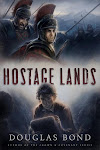INKBLOTS – January 4, 2012
Six of us tonight, Gnarly Head red, cozy fire. I’m working on a borrowed computer as mine is toast, caput, fried, mortified—and still don’t know about data recovery. I have a backup system with an external hard drive but I had been lazy and had not back upped for… well, I really don’t want to admit how long. Lesson learned—painfully—but much less harm done than it could be.
David K is going the self-publication route with Winepress and shared with us about their initial edit, lots of input, critique, and pre-typesetting evaluation, which was pretty brutal. They nailed him for shifts in point of view, which I ribbed him for, because I’d been calling him out on that for a number of months. Dave shared how his initial response to their critique was devastating, and made him defensive, but the more he read and reread what they said, it began to make sense, and he set to work revising. We discussed rereading Elements of Style, and Beyond Style, and Secrets of Successful Fiction. I find these books super helpful—there are many others, but these have helped me, over and again.
Dave read another new first chapter, since the critique said that it didn’t set the hook well enough and too much back story. “Three would live; three would die,” motif throughout the chapter. Dougie Mc suggested going inside the head to make it personal. Three guns, three knives. It is a very short chapter; maybe too short, not enough development to make it alive, not enough flesh on the bones—good bones, but needs muscle and sinew, perhaps. I missed what happened when he heard the rustling behind him and the other guy had a gun? I was not clear what happened. These killings trouble me. There is no context to understand them in. It moves so fast that the reader is going to have trouble knowing who they are supposed to care about, who is in the right, why the killings were necessary. I think it needs a clearer point of view, a real human being the reader rapidly begins to care about, who must kill or be killed. Make him a conflicted genetically engineered strong man, who wonders about his purpose, his design as a killer. It begins in 2013 but if it is futuristic then it needs to be further ahead in time; George Orwell wrote 1984 in the 50s.
Jennifer reads a nonfiction reflection essay. It is a lyric overview of church history from Athanasius to Anselm, Assisi to Huss, Luther to Knox, Tyndale to Askew, Waldensians to Covenanters, Bunyan to Edwards, Carey to Carmichael, and then the persona finds herself connected to this heritage. What about actual hymn phrase beginning and ending, inclusion, bookends to the sweeping overview of church history. I suggested this was a sketch that was a piece of an argument for the essential importance of inspiring our children with connecting them to heroes of church history so that they are less and less impressed with pop culture. Or is this an opening reflection on sketches that go close on each of these characters, but directed with application to mothering our children.
We talked about using Writers’ Market to find periodicals, where the markets are for the kind of writing a person is inclined toward. And reading articles by Starr Meade and Joni Erickson and others, like Susan Hunt, Noel Piper.
Dougie reads a chapter from our Savonarola biography (this is fun; he does all the work; I waltz in and blast him to smithereens—love it). I gave us 9 weeks to research and write it—what’s the problem? My initial impression is great improvement in flow, cohesion, and a conversational style that is accessible to many readers. Shmoozer and the schmoozed might be a bit much. Good choice of quotation on real beauty versus external adornment of women—“you’re ugly.” Great line, though some women may not appreciate your candor. Shows Savonarola’s frank, confrontational, no-Mr.-nice-guy style. Wealthy have nowhere to hide when he launches in on them. Eight line quotation works pretty well. Much longer and we might lose the reader. Seems like smooth transitions from narrative to quotation. Good come-backs from Savonarola that show his character and intrepid nature. Nothing deterred this dude. Go into Lorenzo’s point of view when Savonarola was preaching to him in his own palace. Did it make him angry? But he was dying so he let it go, or what? We discussed reading chapter 4 out of context and what immediately preceded it.
John S reads revisions of his modern fiction novel, an expose on the evils of abortion. Recaps for those who don’t remember the flow of the tale. Avoid “came his reply” for attributions. Keep it concise and unobtrusive: “he replied” is far better and less distracting. Attributions are purely functional. Don’t draw attention to them by overstating them. “There was a slight hesitation.” Same thing: “She hesitated” is far better. Less is almost always more. Swap 5 words for 2 and you have significantly upped the pace, and kept the main thing the main thing: the actual drama of the story, not the commentary on who is speaking and how they spoke it. “Came bursting from her trembling lips,” is too wordy, as is “she suddenly blurted out.” Blurting is by definition sudden. Just blurted. I would go through and evaluate how you can make your attributions more concise, less obtrusive. Over writing or double attribution.




























No comments:
Post a Comment